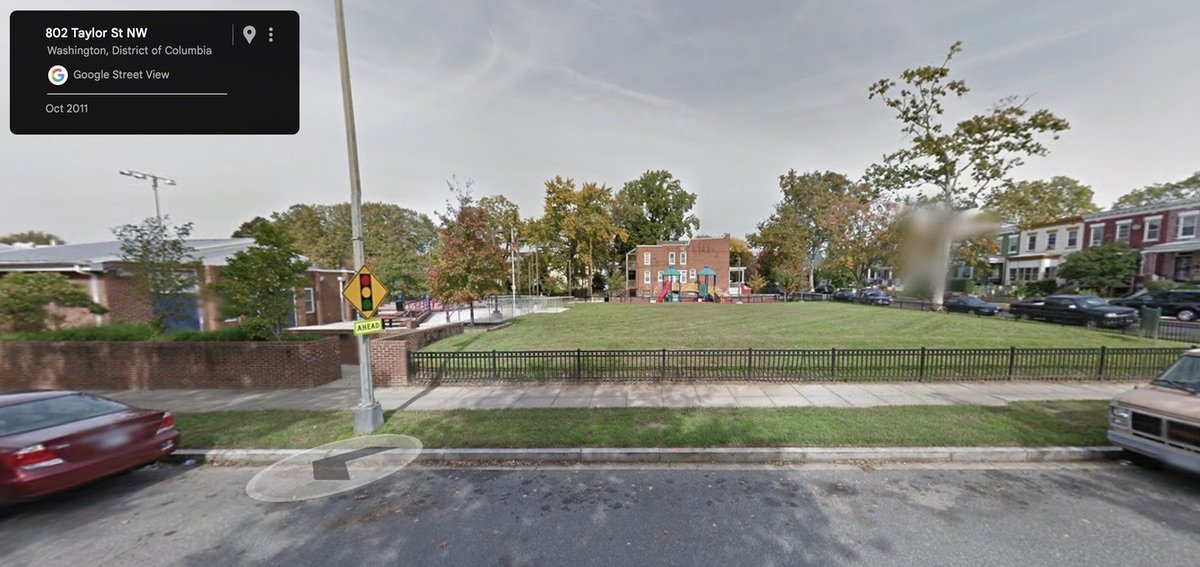Chief Lanier shares crime stats and sources
/Photo courtesy HuffPost
Chief Cathy Lanier responded to an email from a resident the other day about the recent surge in violence, and confusion as to the reasons cited by MPD, the Police Union and the media. The Chief followed up today with another email to the MPD listservs with citations for her responses. See her email from August 26th below:
"I wanted to make sure that I shared the facts with our community members on violent crime in the city. The information below is what I have provided to the members of the Council for the District of Columbia.
Addressing Violent Crime in Washington, D.C.
The National Trends:
Most major cities are experiencing similar problems with violent crime.
- However, none of these cities are dealing with the legalization of marijuana, and
- None have had any significant new strategies or reorganizations.
*But what the cities do have in common are:
- 3 out of every 4 responding cities have seen increases in homicides this year;
- 60% have seen an increase in non-fatal shootings;
- Nearly half reported scenes with cases from multiple guns and/or high capacity magazines;
- Nearly half reported an increase in gang-related/retaliatory violence;
- 30% reported an increase in violent crime in which the offender is under the influence of synthetic drugs
*From an August 2015 survey by the Major Cities Chiefs Association.
Framing the Challenges in Washington, DC:
Release of Repeat Violent Offenders: At a time when there is growing consensus about the need to modernize the criminal justice system – from policing, through sentencing, to incarceration – we cannot forget that our communities need to be protected from violent offenders.
In DC, we are seeing an increase in the number of repeat violent offenders involved in our shootings and homicides. So far this year:
- At least 22 of our homicide arrestees were under supervision pending trial or on probation or parole at the time of the crime. This is a substantial increase from the 15 under supervision we had all of 2014.
- At least 20 of our homicide victims were under supervision pending trial or on probation or parole at the time of the crime.
- 10 individuals involved in homicides this year had prior homicide charges.
- Almost half, or 45%, of the homicide arrestees had prior gun-related arrests in DC (compared to 27% in 2014); meaning nearly half of the persons responsible for these homicides had previously been arrested for carrying or using illegal guns in the commission of a crime.
- And when it comes to illegal guns, like the national trend, we too are seeing more instances in which multiple guns or high capacity magazines were involved or recovered.
Synthetic Drugs: Often referred to as synthetic marijuana, this drug is not at all like marijuana and the effects are very different. It is an extremely dangerous drug and if not addressed federally, we will have a public health crisis on our hand as its use continues to expand. More and more cities are seeing increased violence associated with the drug.
In Washington, DC, we are already seeing the growing impact of the drug:
- In June of this year, the DCFEMS transported almost 450 patients to local hospitals suffering from overdoses on synthetic drugs.
- In July, Pretrial Services Agency, one of the federal supervision agencies for the District of Columbia, tested 136 individuals arrested for violent crimes and found that 20% were positive for synthetic drugs. Synthetic drugs have now replaced cocaine as the most frequently found in the test of arrestees other than marijuana. Why is this occurring? Because there are no requirements for its inclusion in universal drug screenings; therefore, people don’t worry about losing a job or being returned to jail if their conditions of release prohibit drug use. That is why the Major Cities Chiefs Association recommended that this type of drug screening be mandatory for everyone under supervision in our communities.
Centralization of Drug Units: There are those who assert that the centralization of the drug units has led to an increase in violence; however, the evidence does not support that assertion.
- Homicides began to increase in March; the vice units were not centralized until June 16th.
- Simply put, the vice units had ceased to be as effective as they once were, largely due to the changes in criminal enterprises and drug markets that have made our tactics obsolete.
- The productivity of the vice units had dropped precipitously. In the first four months of 2015, non-marijuana drug arrest had decreased 31 percent. Search warrants and gun recoveries by these units were also declining. Those were telling signs that we had to modernize our approach and change our tactics.
- The fact is, the violence does not appear to stem from the legalization of marijuana or disputes over drug markets.
- Additionally, when you look at the number of non-marijuana drug arrests, and also remove arrests for mere possession, from June to mid-August compared to the same time last summer, our drug arrests have increased 9 percent, which would suggest that our new strategy – and our focus on the seller, not the addict – has been effective in getting more dealers off the streets.
2015 Homicides
As of August 25, there have been 103 homicides. At this same time last year, there had been 72 homicides.
- In the Seventh District, homicides have increased by 95 percent. The Fifth District has seen the next largest increase, with a 67 percent increase from last year.
- Taken together, the Fifth and Seventh Districts account for 84 percent of the overall increase from last year.
Trends in Motives? In terms of the “reasons” for or other identifiable similarities that may account for the increase in homicides, a glance at the known motives reveals an array of troubling reasons. A common theme being individuals are choosing to settle arguments or disputes through extremely violent means. (DOMESTIC)
Table of Motives:
|
Number |
|
|
Argument |
21 (including 8 domestic) |
|
Robbery |
16 |
|
Illegal Gambling/Dice |
7 |
|
Altercation |
6 |
|
Disputes |
3 (including 2 neighborhood disputes) |
|
Retaliation |
3 |
|
Unintended Target |
2 |
|
Child Abuse |
1 |
|
Accidental |
1 |
*Some of these motives may fall under more than one incident
List of Motives
|
Argument |
Between step-son and his step-father, who is fatally stabbed |
Stabbing |
|
Argument |
Between victim and suspect over a woman |
Shooting |
|
Argument |
Between the victim and suspect (acquaintances); at a nightclub |
Shooting |
|
Robbery |
In an attempt to rob victim, suspect had made arrangements to meet victim at hotel |
Stabbing |
|
Argument |
During which boyfriend asphyxiates his girlfriend |
Asphyxiation |
|
Retaliation |
Suspect believed the victim had allowed another suspect to be robbed during a gun deal at which the victim was present |
Shooting |
|
Argument |
Between two brothers, who had a history of not getting along |
Shooting |
|
Argument |
The victim was heard arguing with an unknown individual |
Stabbing |
|
Retaliation |
The victim reportedly fired multiple rounds into the suspect’s grandmother’s home. The suspect retaliated by fatally shooting the victim. |
Shooting |
|
Argument |
Over $20 and illegal gambling |
Shooting |
|
Argument |
Between the victim and mother of his child, when her brother intervened and fatally stabbed the victim |
Stabbing |
|
Argument |
Between victim and suspect over a woman |
Shooting |
|
Altercation |
Victim, who was intoxicated, struck the suspect with his fist. The fight was broken up, but the suspect fatally stabbed the victim |
Stabbing |
|
Argument |
At a nightclub; one party was elbowed by the other |
Shooting |
|
Argument |
That began in Maryland when one party looked at the other party in the wrong manner |
Shooting |
|
Argument |
Stemming from the victim stealing drugs and guns from the suspect |
Stabbing |
|
Robbery |
Suspect attempts to rob three family members and housekeeper |
Other |
|
Argument |
Between victim's mother and her husband; Victim intervened |
Stabbing |
|
Argument |
Victim came to the area to pick up the girlfriend of one of the suspects |
Shooting |
|
Unintended Target |
Victim was not the intended target of the suspect(s) |
Shooting |
|
Argument |
Between victim and suspect, who were intimate partners |
Stabbing |
|
Argument |
Between victim and suspect, who were intimate partners |
Stabbing |
|
Argument |
Between victim and an individual in the area in which he was killed |
Blunt Force Trauma |
|
Altercation |
The victim was reportedly involved in an altercation the day of or day prior |
Shooting |
|
Dispute |
A longtime feud between neighborhood groups |
Shooting |
|
Dispute |
A longtime feud between neighborhood groups |
Shooting |
|
Dispute |
Occurred during a cook-out/block party when individuals became involved in a dispute; multiple individuals began to shoot from both sides |
Shooting |
|
Retaliation |
Victim was said to have been killed for shooting another individual who resides in same neighborhood |
Shooting |
|
Argument |
Between cousins |
Shooting |
|
Argument |
Victim thought suspect was having an affair with his girlfriend; he approached suspect and was stabbed |
Stabbing |
|
Altercation |
Victim and suspect were involved in an altercation; suspect left and retrieved gun; returned and killed the victim |
Shooting |
|
Altercation |
Victim had an altercation with a woman while boarding a bus; victim became involved in another altercation with the suspect, who followed the victim into the street and stabbed him |
Stabbing |
|
Child Abuse |
Abuse at the hands of father results in death of infant |
Blunt Force Trauma |
|
Unintended Target |
Victim was not the intended target of the suspect(s) |
Shooting |
|
Argument |
The suspect had been hit by a rock thrown by the victim's son |
Shooting |
|
Argument |
Between cousins; over rent and alleged theft of a ring |
Shooting |
|
Altercation |
Between the victim and suspect during a basketball game |
Stabbing |
|
Argument |
Between victim and suspect, who struck the victim in the face causing him to fall and strike his head on the sidewalk/curb |
Blunt Force Trauma |
|
Locations: |
2014 |
2015 |
|
Outside |
56% |
74% |
|
In Vehicle |
11% |
20% |
|
Inside |
33% |
6% |
Homicides by Month: 2008 to 2015
|
Jan |
Feb |
Mar |
Apr |
May |
Jun |
Jul |
Aug |
Sep |
Oct |
Nov |
Dec |
Total |
|
|
2011 |
9 |
6 |
7 |
11 |
13 |
9 |
7 |
14 |
5 |
13 |
8 |
6 |
108 |
|
2012 |
6 |
5 |
6 |
9 |
8 |
9 |
9 |
5 |
11 |
7 |
3 |
10 |
88 |
|
2013 |
5 |
7 |
5 |
4 |
6 |
11 |
15 |
7 |
23 |
5 |
9 |
7 |
104 |
|
2014 |
14 |
9 |
8 |
6 |
9 |
12 |
11 |
4 |
7 |
9 |
5 |
11 |
105 |
|
2015 |
8 |
8 |
10 |
8 |
16 |
18 |
16 |
19 |
103 |
Homicide and Closures by District
|
1D |
2D |
3D |
4D |
5D |
6D |
7D |
|
|
2015 Homicides |
5 |
5 |
12 |
8 |
20 |
16 |
37 |
|
2015 Closures |
3 |
4 |
4 |
5 |
7 |
4 |
15 |
|
Prior Year Closures |
1 |
0 |
0 |
1 |
3 |
4 |
4 |
|
Total UCR Closures |
4 |
4 |
4 |
6 |
10 |
8 |
19 |
|
UCR Closure Rate |
80% |
80% |
33% |
75% |
50% |
50% |
51% |
Washington DC: By the Numbers




















